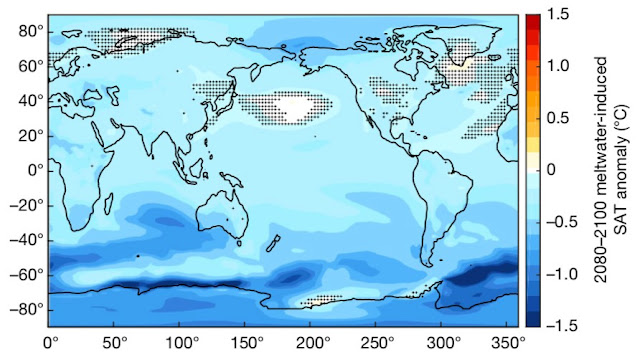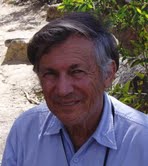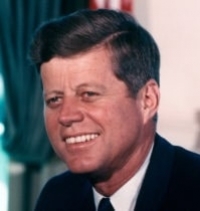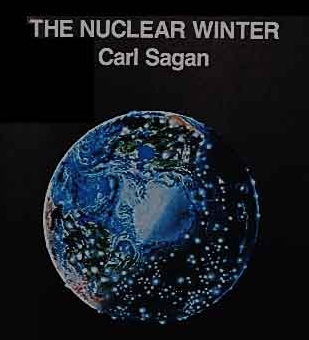The Cretaceous-Paleocene boundary (~66 million years-ago) asteroid impact, described in 1980 by Alvarez et al., caused enough dust and debris to cloud large parts of planet and result in the mass extinction of some 80% of all species of animals.
When Turco et al. (1983) and Carl Sagan (1983) warned the world about the climatic effects of a nuclear war, they pointed out that the amount of carbon stored in a large city was sufficient to release enough aerosols (smoke, soot and dust) to block sunlight over large regions, leading to a widespread failure of crops and thereby extensive starvation.
Current nuclear arsenals by the United States and Russia could inject 150 Teragram (Tg) (10⁹ kilogram) of soot from fires ignited by nuclear explosions into the upper troposphere and lower stratosphere (Coupe et al., 2019), lasting for a period of 10 years or longer, followed by a period of intense radioactive radiation over large areas. Even a “limited” nuclear war, such as between India and Pakistan, would release enough aerosols to affect large regions, killing millions or billions through starvation. As stated by Robock et al., 2007): “The casualties from the direct effects of blast, radioactivity, and fires resulting from the massive use of nuclear weapons by the superpowers would be so catastrophic … the ensuing nuclear winter would produce famine for billions of people far from the target zones”.
By 2021, with a global arsenal of ~13.000 nuclear warheads, 90 percent of which held by Russia and the US, regional conflicts such as in the Ukraine and Taiwan threaten to spill world-wide. As the clock of the atomic scientists is set at 100 seconds to doomsday, the rising probability of an intended or inadvertent nuclear war, in the background of rising global warming, indicate an hour of truth for the species―a choice between the defence of life on Earth and global suicide.
While the inhabitants of the planet are preoccupied with the 24 hours news cycle, media hype, superlatives, a deadly Virus, economic issues and sport games, the hair-trigger nuclear gun loaded by the powers to be, east and west, is threatening all life on Earth.
 |
| Figure 2. Robock et al. (2007): Global average surface air temperature change from the 5 Tg standard case (red) in the context of climate change over 125 years climate change (125 years NASA data). From Robock et al. (2007). |
A release of 5Tg (Tera-gram) of black carbon is modelled to lower the average global temperature by about 1.5°C (Robock et al. 2007), although over the continents cooling is likely to be more abrupt.
 |
| Figure 4. 2021 Estimated global nuclear warhead inventories |
Such an extreme event would arrest global warming for a period of about 10 years or longer (Figures 2 and 3), possibly in part analogous to the consequences of a less abrupt flow of polar ice melt into the oceans, as modelled by Bronselaer et al. (2018) (Figure 5).
 |
| Figure 5. Model 2080–2100 meltwater-induced sea-air temperature anomalies relative to the standard RCP8.5 ensemble (Bronselaer et al., 2018), indicating marked cooling of parts of the southern oceans. Hatching indicates where the anomalies are not significant at the 95% level. |
When Sagan and colleagues published their observations of a nuclear winter scenario as a warning to humanity, Sagan was painted as an “alarmist” by many, facing extensive criticism not just from pro-nuclear conservatives but also from scientists who resented him for leveraging his personal fame for advocating what some regarded as political views. A similar situation occurs nowadays with regard to the accelerating global warming and the nuclear threat, as confirmed by the warning by the Bulletin of the Atomic Scientists.
From the January 20, 2022 Bulletin of the Atomic Scientists news release:
While the past year offered glimmers of hope that humankind might reverse its march toward global catastrophe, the Doomsday Clock was set at just 100 seconds to midnight. The time is based on continuing and dangerous threats posed by nuclear weapons, climate change, disruptive technologies, and COVID-19. All of these factors were exacerbated by “a corrupted information ecosphere that undermines rational decision making.” The Doomsday Clock statement explains that the “decision does not, by any means, suggest that the international security situation has stabilized. On the contrary, the Clock remains the closest it has ever been to civilization-ending apocalypse because the world remains stuck in an extremely dangerous moment.”
{vembed Y=EB7H6L26Agc}
Time is running out.
Author
 Dr Andrew Glikson, a Earth and paleoclimate scientist, is a Visiting Fellow at the School of Archaeology and Anthropology, Australian National University, where he is reviewing the effects of climate on prehistoric human evolution. He is also an Honorary Professor at the Center for Excellence in Geothermal Research, The University of Queensland, and is affiliated with the Climate Change Institute and the Planetary Science Institute, Australian National University. He graduated at the University of Western Australia in 1968, conducted geological surveys in central and western Australia and became a Principal Research Scientist with the Australian Geological Survey Organization (now Geoscience Australia).
Dr Andrew Glikson, a Earth and paleoclimate scientist, is a Visiting Fellow at the School of Archaeology and Anthropology, Australian National University, where he is reviewing the effects of climate on prehistoric human evolution. He is also an Honorary Professor at the Center for Excellence in Geothermal Research, The University of Queensland, and is affiliated with the Climate Change Institute and the Planetary Science Institute, Australian National University. He graduated at the University of Western Australia in 1968, conducted geological surveys in central and western Australia and became a Principal Research Scientist with the Australian Geological Survey Organization (now Geoscience Australia).
Related historical content
{vembed Y=HijgaqjJ8AI}
Nuclear winter (also known as atomic winter) is a hypothetical climatic effect of countervalue nuclear war. More Carl Sagan: https://www.amazon.com/gp/search?ie=U...
Models suggest that detonating dozens or more nuclear weapons on cities prone to firestorm, comparable to the Hiroshima of 1945, could have a profound and severe effect on the climate causing cold weather and reduced sunlight for a period of months or even years by the emission of large amounts of the firestorms smoke and soot into the Earth's stratosphere. Similar climatic effects can be caused by comets or an asteroid impact, also sometimes termed an impact winter, or by a supervolcano eruption, known as a volcanic winter.
During the early 1980s, Fidel Castro recommended to the Kremlin a harder line against Washington, even suggesting the possibility of nuclear strikes. The pressure stopped after Soviet officials gave Castro a briefing on the ecological impact on Cuba of nuclear strikes on the United States.[60] In an interview in 2000, Mikhail Gorbachev, in response to the comment "In the 1980s, you warned about the unprecedented dangers of nuclear weapons and took very daring steps to reverse the arms race," said "Models made by Russian and American scientists showed that a nuclear war would result in a nuclear winter that would be extremely destructive to all life on Earth; the knowledge of that was a great stimulus to us, to people of honor and morality, to act in that situation."[61]
As the implications of nuclear winter began to be taken seriously in the late 1980s, military analysts turned their attention to the development of nuclear warheads that would explode at low altitudes and cause less thermal radiation ignited fires, thus reducing the likelihood of a nuclear winter. The TTAPS paper had described a 3000 MT counterforce attack on ICBM sites; Michael Altfeld of Michigan State University and political scientist Stephen Cimbala of Pennsylvania State University argued that smaller, more accurate warheads and lower detonation heights could produce the same counterforce strike with only 3 MT and produce less climatic effects, even if cities were targeted, as lower fuzing heights, such as surface bursts, would limit the range of the burning thermal rays due to terrain masking and shadowing, while also temporarily lofting far more radioactive soil into the atmosphere. Therefore as a consequence of attempting to limit the target fire hazard by reducing the range of thermal radiation with fuzing for surface bursts, this will result in a scenario were the far more concentrated, and therefore deadlier, local fallout that is generated following a surface burst forms, as opposed to the comparatively dilute global fallout created when nuclear weapons are fuzed in air burst mode.[62][63]
Altfeld and Cimbala also suggested that belief in the possibility of nuclear winter has actually made nuclear war more likely, contrary to the views of Sagan and others, because it has inspired the development of more accurate, and lower explosive yield, nuclear weapons.
 Below is a sound recording of President John F. Kennedy’s address at the 1963 commencement ceremony for The American University held at the John M. Reeves Athletic Center in Washington, D.C. In his speech the President asks the graduates to re-examine their attitudes towards peace, the Soviet Union, and the Cold War, famously remarking, "If we cannot end now our differences, at least we can make the world safe for diversity."
Below is a sound recording of President John F. Kennedy’s address at the 1963 commencement ceremony for The American University held at the John M. Reeves Athletic Center in Washington, D.C. In his speech the President asks the graduates to re-examine their attitudes towards peace, the Soviet Union, and the Cold War, famously remarking, "If we cannot end now our differences, at least we can make the world safe for diversity."
The President also announces that he, Soviet Premier Nikita Khrushchev, and British Prime Minister Harold Macmillan have agreed to hold discussions concerning a comprehensive nuclear test ban treaty. Finally, he explains that the United States will not conduct atmospheric nuclear tests on the condition that other countries uphold this same promise.
[audio src="/images/audiolibrary/JFK_Speech_on_Peace.mp4" autoplay="off" style="width:80%;margin:auto;"background="#1EAFEB"]
![]() Help keep us afloat. Donate here
Help keep us afloat. Donate here







